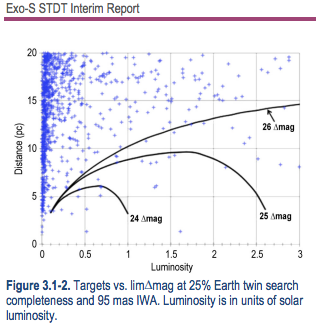It looks like you're using an Ad Blocker.
Please white-list or disable AboveTopSecret.com in your ad-blocking tool.
Thank you.
Some features of ATS will be disabled while you continue to use an ad-blocker.
share:
Hello again, while I was looking at a proposed preliminary list of target stars for NASA's Exo-S, direct imaging exoplanet mission I was reminded of
the research I did in the fall of 2013 into the 'map', alleged UFO abductee Betty Hill claimed she saw while on board a supposed alien spacecraft and
which she later drew.
There are very few claims from abductees which can be scientifically tested and this was perhaps the only one, even today.
Much of my initial research was published as a reply to this thread here ATS: The Hill Star Map and Exoplanets.
My research was in memory of Oak Ridge National Laboratory technician Marjorie Fish who passed away earlier that year, April 8, 2013

I created the video below back then but never published it (though one ATS moderator saw it) because it was (and still is) unfinished and awaiting further research:
I originally intended to publish it in the winter of 2013 or on April 8, 2014, the one year anniversary of Ms. Fish's death but school and work limited my time and it now looks as though I may be busier than ever so when I was reminded of it yesterday (more on this in a bit) I felt compelled to create this thread and post it. I've also been in touch with Stanton Friedman and comfortable he'd be ok with his inclusion however I didn't really have time to edit him in so I just posted the clip I'd have used above. There are also reservations I have regarding my original premise (which I'll get to in my next post).
So what brought me to post it?
Yesterday while reading this report on a proposal to use a starshade to take images of planets around nearby stars I found a number of stars on it of interest and familiar to those well-versed in the Hill case:
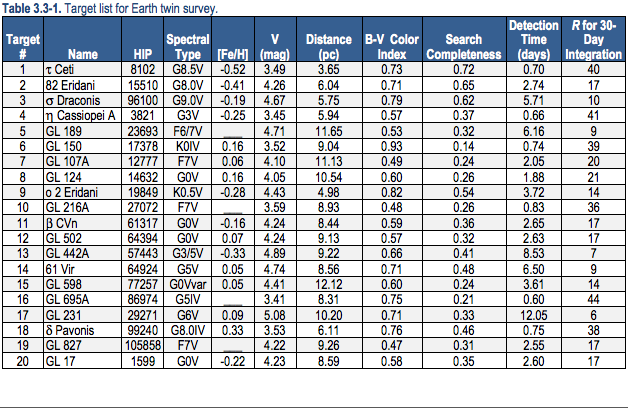
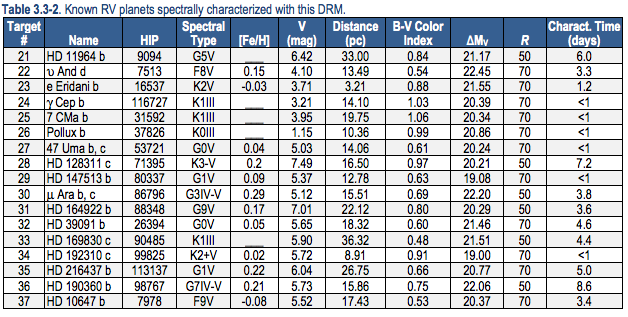
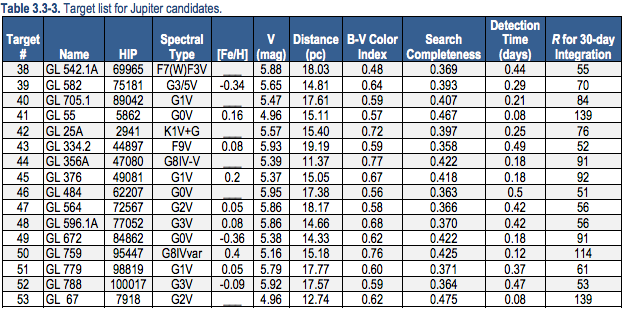
The report is entitled: Exo-S: Starshade Probe-Class Exoplanet Direct Imaging Mission Concept - Interim Report - NASA/JPL - April 28, 2014
SIDENOTE: How a Telescope with Sunglasses May Find E.T - Time Magazine - February 29, 2012
So what does this have to do with the Hill case?

Background: A couple named Barney and Betty Hill claimed to be abducted by beings in a UFO in 1961. Following a physical examination Betty told of being befriended by one of the beings on the craft. She asked it where they came from and the alleged alien being instead asked her if she knew where she was on a 3-D projected map of stars. Betty with no training in astronomy did not know however she did remember the map and sketched it out:
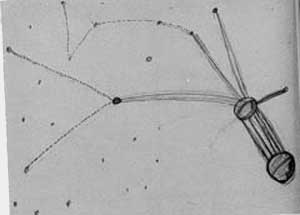

Marjorie Fish (1932-2013), an Amateur astronomer -and- UFO skeptic, began work in 1966 to see if the "map" lined up with any nearby stars from the Gliese catalog and other astronomical catalogs by building physical models of the nearby stars.
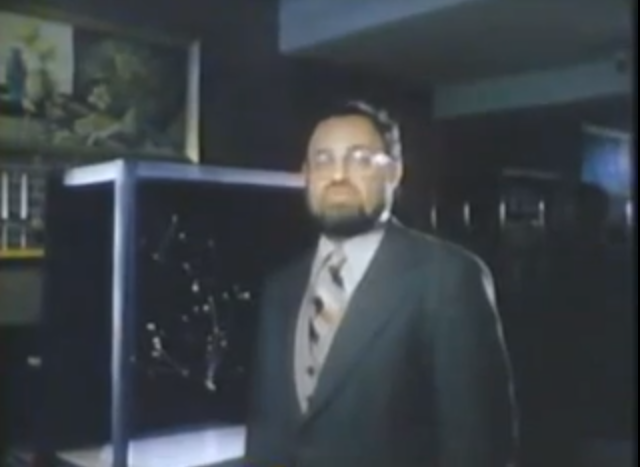
UFO Researcher and Nuclear Physicist Stanton Friedman with Marjorie Fish's model in the 1970s.
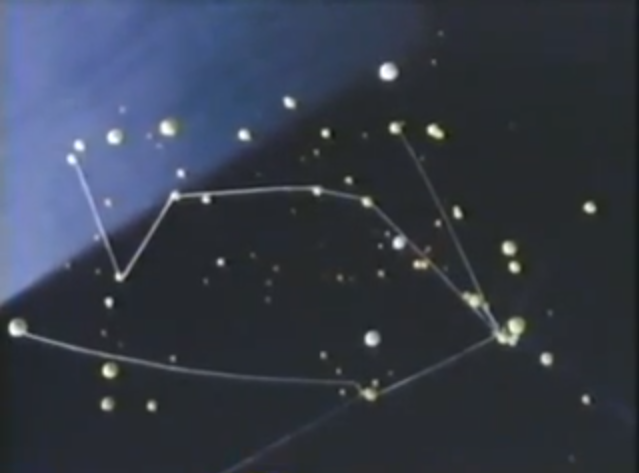
In total Marjorie FIsh built around 16 models before finding a suitable match:

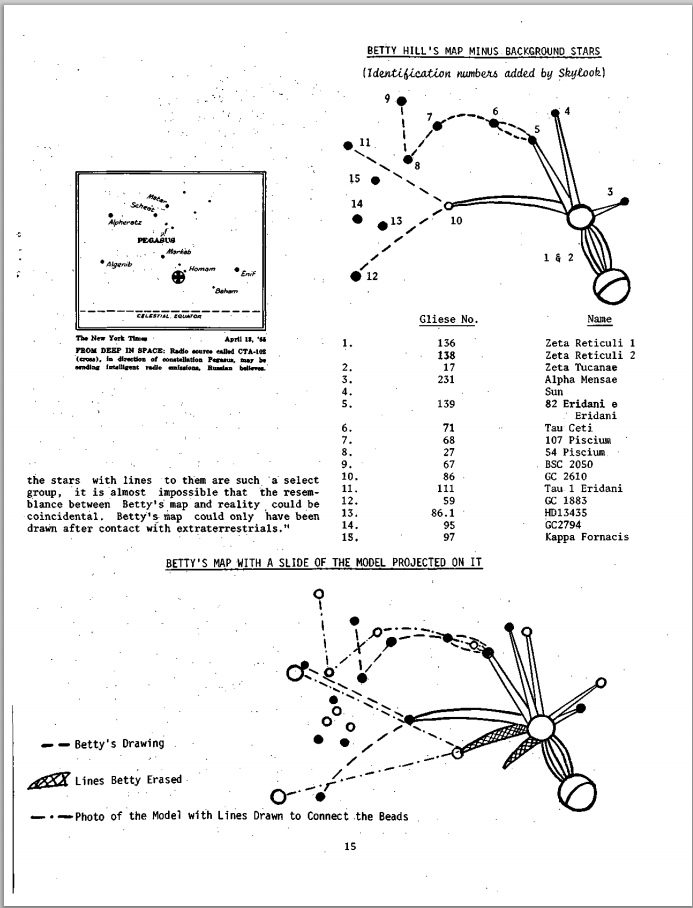
The list of stars includes our Sun and several nearby stars. The "base" stars were identified as Zeta 1 Reticuli and Zeta 2 Reticuli:
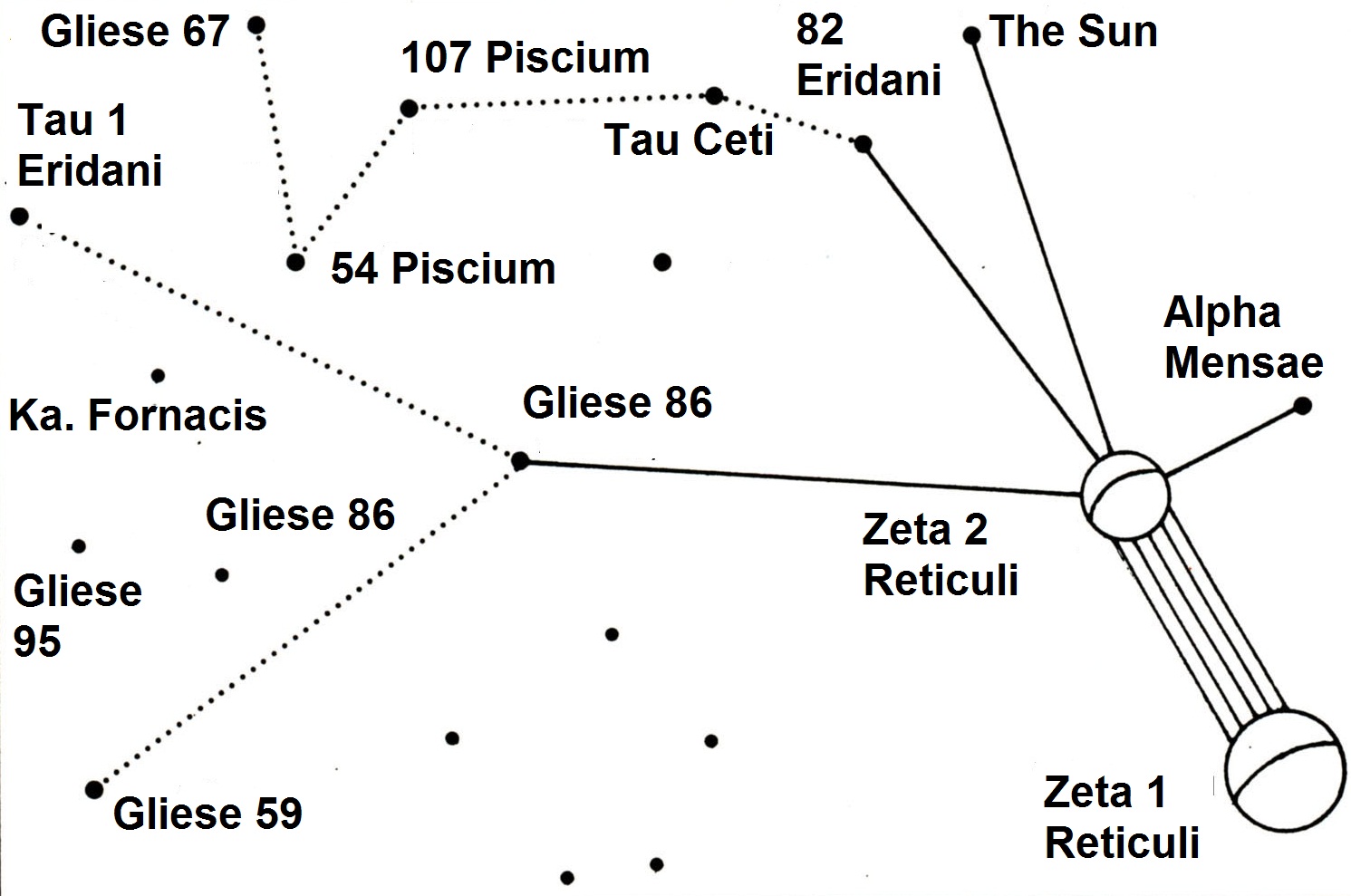
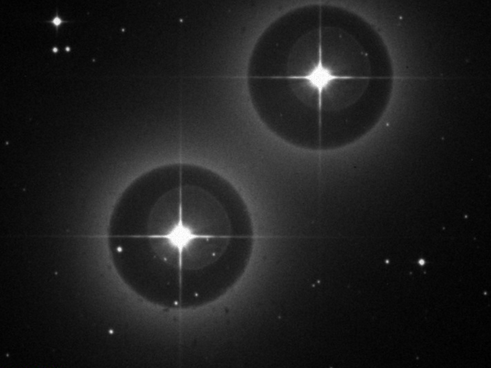
The widely separated binary star system of Zeta Reticuli as imaged by me using a remotely controlled telescope in Australia.
It should be noted that Ms. Fish's models were of good quality, and it is remarkable the work she did without the use of a computer. One of the models she made of the nearest stars was used by Ohio State University's Astronomy Department at Perkins Observatory in the 1970s.
The news that Ms. Fish appeared to find a close correlation between the "map" Betty Hill drew and her own astrometric models did not go unnoticed in academia.
Astronomy Magazine examined the claim in its December 1974 issue and several astronomers debated it in the following months:
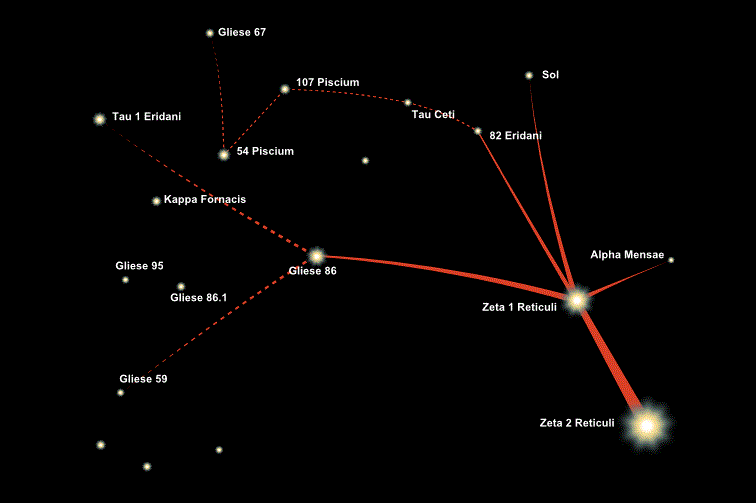
The Hill-Fish Star Map as it appeared in Astronomy Magazine, Dec 1974
As well as an analysis by astronomer and science writer Terence Dickinson:
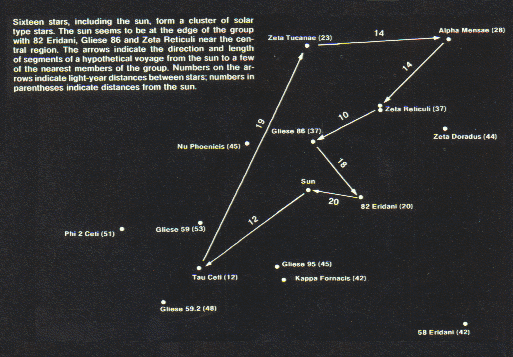
The entire affair was summarized in Terence Dickinson's "The Zeta Reticuli Incident" which included the debate in Astronomy magazine between Dickinson and none other than Carl Sagan:
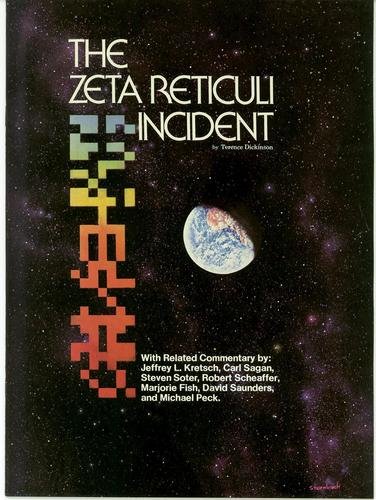
Back to Exo-S...
When going through the star list in the NASA/JPL document I referenced earlier, I decided to highlight the stars which are both on the Hill-Fish star map and the preliminary list for NASA's proposed starshade mission. And though the Zeta Reticuli pair of stars do not appear on the list, I also noticed that several of the stars on the NASA list could be some of the stars Ms. Fish wrote "these haven't been found yet" next to in her note below. Lastly I located a couple of alternatives to a couple stars she presented based on the distance and perspective the map was presumably seen and drawn from and current information she did not have at the time she made her model:


NOTES: Here are the distances in light-years (ly) of the stars on the map(s) from the alleged homeworld circling Zeta 1 Reticuli:
Original Map stars:
Our Sun aka Sol - 38 ly
Tau Ceti - 33 ly
82 Eridani - 22 ly
Alpha Mensae - 14 ly
Tau 1 Eridani - 32 ly
107 Piscium - 44 ly
54 Piscium - 53 ly
Gliese 59 A 43 ly
Gliese 67 - 65 ly
Missing(?) Stars:
Gliese 827 aka HIP 105858 aka Gamma Pavonis - 23 ly (missing star or alternative for Gliese 86 A)
Gliese 759 aka HIP 95447 aka 31 Aquilae - 74 ly
Alternatives to stars on the original map:
HD 40307 - 13 ly
Gliese 25 - 36 ly
Gliese 59 A - 43 ly
Upsilon Andromedae - 66 ly
Gliese 777A - 81 ly
Tau Ceti has at least 1, possibly 2 potentially habitable exoplanets (e and f) - the nearest potentially habitable exoplanets:
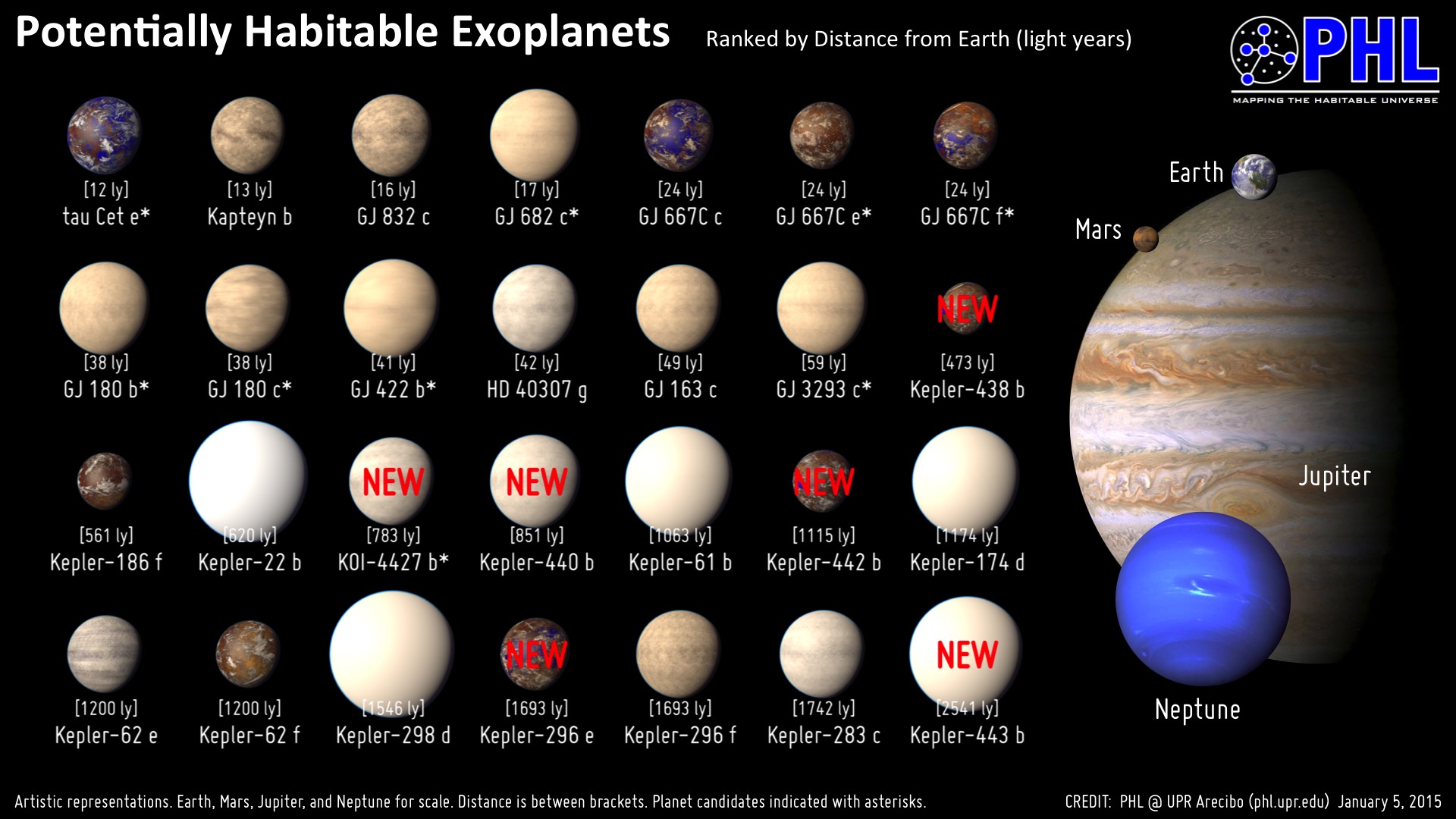
82 Eridani d is in this Astrobites post: How Hot is Too Hot?
One of my alternatives is the star Upsilon Andromedae which is known to have a gas giant planet larger than Jupiter (Upsilon Andromedae d) orbiting in the habitable zone of the star. This planet is included on the NASA/JPL list because it could host a habitable moon:
Another of my alternatives, HD 40307 has a planet (HD 40307 g) which is a SuperEarth in the stars habitable zone. As such HD 40307 could possibly replace Alpha Mensae. NASA and JPL think so highly of HD 40307 g that they made this old timey travel poster for it:
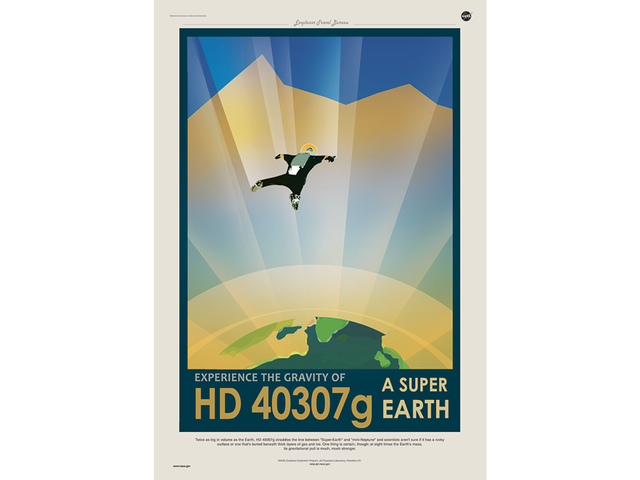
Next I will offer criticism of all of this.
There are very few claims from abductees which can be scientifically tested and this was perhaps the only one, even today.
Much of my initial research was published as a reply to this thread here ATS: The Hill Star Map and Exoplanets.
My research was in memory of Oak Ridge National Laboratory technician Marjorie Fish who passed away earlier that year, April 8, 2013

I created the video below back then but never published it (though one ATS moderator saw it) because it was (and still is) unfinished and awaiting further research:
I originally intended to publish it in the winter of 2013 or on April 8, 2014, the one year anniversary of Ms. Fish's death but school and work limited my time and it now looks as though I may be busier than ever so when I was reminded of it yesterday (more on this in a bit) I felt compelled to create this thread and post it. I've also been in touch with Stanton Friedman and comfortable he'd be ok with his inclusion however I didn't really have time to edit him in so I just posted the clip I'd have used above. There are also reservations I have regarding my original premise (which I'll get to in my next post).
So what brought me to post it?
Yesterday while reading this report on a proposal to use a starshade to take images of planets around nearby stars I found a number of stars on it of interest and familiar to those well-versed in the Hill case:



The report is entitled: Exo-S: Starshade Probe-Class Exoplanet Direct Imaging Mission Concept - Interim Report - NASA/JPL - April 28, 2014
SIDENOTE: How a Telescope with Sunglasses May Find E.T - Time Magazine - February 29, 2012
So what does this have to do with the Hill case?

Background: A couple named Barney and Betty Hill claimed to be abducted by beings in a UFO in 1961. Following a physical examination Betty told of being befriended by one of the beings on the craft. She asked it where they came from and the alleged alien being instead asked her if she knew where she was on a 3-D projected map of stars. Betty with no training in astronomy did not know however she did remember the map and sketched it out:


Marjorie Fish (1932-2013), an Amateur astronomer -and- UFO skeptic, began work in 1966 to see if the "map" lined up with any nearby stars from the Gliese catalog and other astronomical catalogs by building physical models of the nearby stars.

UFO Researcher and Nuclear Physicist Stanton Friedman with Marjorie Fish's model in the 1970s.

In total Marjorie FIsh built around 16 models before finding a suitable match:


The list of stars includes our Sun and several nearby stars. The "base" stars were identified as Zeta 1 Reticuli and Zeta 2 Reticuli:


The widely separated binary star system of Zeta Reticuli as imaged by me using a remotely controlled telescope in Australia.
It should be noted that Ms. Fish's models were of good quality, and it is remarkable the work she did without the use of a computer. One of the models she made of the nearest stars was used by Ohio State University's Astronomy Department at Perkins Observatory in the 1970s.
The news that Ms. Fish appeared to find a close correlation between the "map" Betty Hill drew and her own astrometric models did not go unnoticed in academia.
Astronomy Magazine examined the claim in its December 1974 issue and several astronomers debated it in the following months:

The Hill-Fish Star Map as it appeared in Astronomy Magazine, Dec 1974
As well as an analysis by astronomer and science writer Terence Dickinson:

The entire affair was summarized in Terence Dickinson's "The Zeta Reticuli Incident" which included the debate in Astronomy magazine between Dickinson and none other than Carl Sagan:

Back to Exo-S...
When going through the star list in the NASA/JPL document I referenced earlier, I decided to highlight the stars which are both on the Hill-Fish star map and the preliminary list for NASA's proposed starshade mission. And though the Zeta Reticuli pair of stars do not appear on the list, I also noticed that several of the stars on the NASA list could be some of the stars Ms. Fish wrote "these haven't been found yet" next to in her note below. Lastly I located a couple of alternatives to a couple stars she presented based on the distance and perspective the map was presumably seen and drawn from and current information she did not have at the time she made her model:


NOTES: Here are the distances in light-years (ly) of the stars on the map(s) from the alleged homeworld circling Zeta 1 Reticuli:
Original Map stars:
Our Sun aka Sol - 38 ly
Tau Ceti - 33 ly
82 Eridani - 22 ly
Alpha Mensae - 14 ly
Tau 1 Eridani - 32 ly
107 Piscium - 44 ly
54 Piscium - 53 ly
Gliese 59 A 43 ly
Gliese 67 - 65 ly
Missing(?) Stars:
Gliese 827 aka HIP 105858 aka Gamma Pavonis - 23 ly (missing star or alternative for Gliese 86 A)
Gliese 759 aka HIP 95447 aka 31 Aquilae - 74 ly
Alternatives to stars on the original map:
HD 40307 - 13 ly
Gliese 25 - 36 ly
Gliese 59 A - 43 ly
Upsilon Andromedae - 66 ly
Gliese 777A - 81 ly
Tau Ceti has at least 1, possibly 2 potentially habitable exoplanets (e and f) - the nearest potentially habitable exoplanets:

82 Eridani d is in this Astrobites post: How Hot is Too Hot?
One of my alternatives is the star Upsilon Andromedae which is known to have a gas giant planet larger than Jupiter (Upsilon Andromedae d) orbiting in the habitable zone of the star. This planet is included on the NASA/JPL list because it could host a habitable moon:
Another of my alternatives, HD 40307 has a planet (HD 40307 g) which is a SuperEarth in the stars habitable zone. As such HD 40307 could possibly replace Alpha Mensae. NASA and JPL think so highly of HD 40307 g that they made this old timey travel poster for it:

Next I will offer criticism of all of this.
edit on 12-1-2015 by _BoneZ_ because: Edit at request of OP
edit on 1-31-2019 by
Springer because: Removed CGI image at the request of the IP owner
Should there be a reason that both Zeta reticuli 1 and 2 are not of interest by NASA ?
one should think they are not allowed to do research on those two star systems . But that's just speculation of course. .
one should think they are not allowed to do research on those two star systems . But that's just speculation of course. .
CRITICISMS
So, in going over my research from a highly skeptical viewpoint it has a number of problems. Below are my thoughts as well as how to address the problems in the future:
1. The original premise by Ms. Marjorie Fish omitted Red Dwarf stars
When Marjorie Fish made her models she excluded small red dwarf stars which scientists at the time did not think could support habitable planets. It was not her fault that she did this, it was the conventional wisdom of the day. Today we now know that it is quite possible to have habitable planets orbit these dim, but plentiful stars. By omitting red dwarfs before Ms. Fish made her models and knowing what we now believe regarding the habitability of planets around them Ms. Fish selected out what may be the most common place life exists in our galaxy.
As such, even if the aliens existed, the map she created from models may not match the one the alleged aliens showed Betty Hill and thus would be inaccurate even if you're a believer in the story.
How to address it:
Await data from surveys of nearby stars for habitable exoplanets (see #2) and then start from square one looking for potential matches which include red dwarf stars which have habitable zone exoplanets.
2. Incomplete data.
In the video I pointed out the lack of exoplanets in the opposite direction of most of the "routes" on the map. This would appear to give it some credence because why would intelligent aliens map places without planets closer to their home?
The problem with this reasoning is that we've only just begun to examine the nearest stars for exoplanets so their absence especially in the southern hemisphere sky (most exoplanets until recently were in the northern hemisphere) as such there are massive gaps. We now know due to Kepler's statistical survey that just about every star has at least one planet. That we've not found any in that direction says more about the newness of our planet search than about the possibility of an intelligent ET species navigating in the direction of higher densities of exoplanets.
How to address it:
Problem 2 will only be addressed through a complete survey and characterization of nearby (under 100 light years distance) rocky exoplanets and that's at least 5-10 years away.
So, in going over my research from a highly skeptical viewpoint it has a number of problems. Below are my thoughts as well as how to address the problems in the future:
1. The original premise by Ms. Marjorie Fish omitted Red Dwarf stars
When Marjorie Fish made her models she excluded small red dwarf stars which scientists at the time did not think could support habitable planets. It was not her fault that she did this, it was the conventional wisdom of the day. Today we now know that it is quite possible to have habitable planets orbit these dim, but plentiful stars. By omitting red dwarfs before Ms. Fish made her models and knowing what we now believe regarding the habitability of planets around them Ms. Fish selected out what may be the most common place life exists in our galaxy.
As such, even if the aliens existed, the map she created from models may not match the one the alleged aliens showed Betty Hill and thus would be inaccurate even if you're a believer in the story.
How to address it:
Await data from surveys of nearby stars for habitable exoplanets (see #2) and then start from square one looking for potential matches which include red dwarf stars which have habitable zone exoplanets.
2. Incomplete data.
In the video I pointed out the lack of exoplanets in the opposite direction of most of the "routes" on the map. This would appear to give it some credence because why would intelligent aliens map places without planets closer to their home?
The problem with this reasoning is that we've only just begun to examine the nearest stars for exoplanets so their absence especially in the southern hemisphere sky (most exoplanets until recently were in the northern hemisphere) as such there are massive gaps. We now know due to Kepler's statistical survey that just about every star has at least one planet. That we've not found any in that direction says more about the newness of our planet search than about the possibility of an intelligent ET species navigating in the direction of higher densities of exoplanets.
How to address it:
Problem 2 will only be addressed through a complete survey and characterization of nearby (under 100 light years distance) rocky exoplanets and that's at least 5-10 years away.
edit on 12-1-2015 by JadeStar because: (no reason given)
originally posted by: 0bserver1
Should there be a reason that both Zeta reticuli 1 and 2 are not of interest by NASA ?
one should think they are not allowed to do research on those two star systems . But that's just speculation of course. .
They are both of interest to NASA and they have both appeared on other star lists NASA made (High Resoluton Microwave Survey aka NASA SETI, Terrestrial Planet Finder Interferometer 500 star list, Space Interferometry Mission PlanetQuest list).
The reason I think they do not appear on this list is the same reason the nearest star system, Alpha Centauri is not on the list.
As explained in the paper:
3.3 Target Lists
Our target list excludes binary stars with close
companions. Alpha Centauri A/B are
specifically excluded because their large size
results in the shadow converging in front of the
telescope. This applies at the standard
distances set for the three observing bands. It
may be possible to carry out the Alpha Cen
observations with the starshade moved closer
to the telescope and this will be studied further
and addressed in the Final Report.
So it stands to reason if they approve Alpha Centauri then Zeta Reticuli might also be approved in the Final Report (which I will keep an eye out for.)
a reply to: JadeStar
It's miraculous that the Mr and Mrs Hill had such good description drawing of this starmap that has such great similarities with other professional mapping. . Coincidence I don't think so , although their are many stars that could have had the same alignment.

But looking at the habitable planet map are those assuming planetary environments they show or just speculative environments you see on that map?
I think our planet is rather small .. but does that also mean that life would behold a curtain height or does it say nothing at all?
Also my apologies for jumping in to quickly. ..
Great thread ..S&F
It's miraculous that the Mr and Mrs Hill had such good description drawing of this starmap that has such great similarities with other professional mapping. . Coincidence I don't think so , although their are many stars that could have had the same alignment.

But looking at the habitable planet map are those assuming planetary environments they show or just speculative environments you see on that map?
I think our planet is rather small .. but does that also mean that life would behold a curtain height or does it say nothing at all?
Also my apologies for jumping in to quickly. ..
Great thread ..S&F
edit on 0b59America/ChicagoMon, 12 Jan 2015 08:47:59 -0600vAmerica/ChicagoMon, 12 Jan 2015 08:47:59 -06001 by 0bserver1
because: (no reason given)
a reply to: JadeStar
Jumpng in…
One reason might be that the 'display' Betty saw was only one map of their explorations. For instance, we have detailed travel maps of the whole planet, but only use the regional one where we are currently traveling displayed on our GPS.
Exactly. As well, choice of destination when traveling to get some where may be more dependent upon way stations or like "base camps" when climbing a mountain. The goal is the top of the mountain but getting there is a step by step process, requiring many trips to established base camps, first. Her map may reflect that, too.
Not that I understand anything about Interstellar exploration capability of any "earth" visitors. Our own ideas about how we go about exploring our solar system used as a comparison, we move in similar fashion, establishing "bases" from which to expand from.
The Ted Talk video about "Star Shade"is fascinating but suggests huge expenditures to accomplish. It requires a "Hubble like" space telescope, "a bit bigger" than Hubble. Load lifting something like that is possible without a shuttle sized cargo bay?
Further: Betty Hills map of known "civilizations" would be hard to prove even with a dedicated study of the systems surrounding Zeta 1 & 2 Reticuli with a start shade apparatus. Understandably the search would begin with closer star systems to Earth. Just like Betty's map reflects an expanding exploration from their "Beginnings".
Thanks for the study, great work…
Jumpng in…
In the video I pointed out the lack of exoplanets in the opposite direction of most of the "routes" on the map. This would appear to give it some credence because why would intelligent aliens map places without planets closer to their home?
One reason might be that the 'display' Betty saw was only one map of their explorations. For instance, we have detailed travel maps of the whole planet, but only use the regional one where we are currently traveling displayed on our GPS.
That we've not found any in that direction says more about the newness of our planet search then about the possibility of an intelligent ET species navigating in the direction of higher densities of exoplanets.
Exactly. As well, choice of destination when traveling to get some where may be more dependent upon way stations or like "base camps" when climbing a mountain. The goal is the top of the mountain but getting there is a step by step process, requiring many trips to established base camps, first. Her map may reflect that, too.
Not that I understand anything about Interstellar exploration capability of any "earth" visitors. Our own ideas about how we go about exploring our solar system used as a comparison, we move in similar fashion, establishing "bases" from which to expand from.
The Ted Talk video about "Star Shade"is fascinating but suggests huge expenditures to accomplish. It requires a "Hubble like" space telescope, "a bit bigger" than Hubble. Load lifting something like that is possible without a shuttle sized cargo bay?
Further: Betty Hills map of known "civilizations" would be hard to prove even with a dedicated study of the systems surrounding Zeta 1 & 2 Reticuli with a start shade apparatus. Understandably the search would begin with closer star systems to Earth. Just like Betty's map reflects an expanding exploration from their "Beginnings".
Thanks for the study, great work…
Very well done thread! Congrats!
I've always felt the Betty and Barney story to be quite interesting for many reasons, the star map just one. The way she remembered and drew the map is so non-scientific that to get any correlation in the 'near by' observable seems stunning to me. I wouldn't doubt if you got 100 people to draw a 'star map' you couldn't match any of it whatsoever.
A worthy investigation to invest time in no doubt.
I've always felt the Betty and Barney story to be quite interesting for many reasons, the star map just one. The way she remembered and drew the map is so non-scientific that to get any correlation in the 'near by' observable seems stunning to me. I wouldn't doubt if you got 100 people to draw a 'star map' you couldn't match any of it whatsoever.
A worthy investigation to invest time in no doubt.
originally posted by: 0bserver1
a reply to: JadeStar
It's miraculous that the Mr and Mrs Hill had such good description drawing of this starmap that has such great similarities with other professional mapping. . Coincidence I don't think so , although their are many stars that could have had the same alignment.
But looking at the habitable planet map are those assuming planetary environments they show or just speculative environments you see on that map?
They're best guesses given what we know about their size and/or mass. Right now such imagery is speculative in nature but based on the data we have available extrapolated to possible outcomes. We won't really know for sure until we can take pictures which is what NASA's Exo-S starshade mission will do if it gets approved.
I think our planet is rather small ..
In that assortment yes. In the grand scheme of things maybe its more typical though the vast majority of planets we've found have been planets larger than Earth but smaller than Neptune. Our solar system doesn't have a planet like this in it so much about them remains a mystery, for now. That's why the larger ones are shown as rather blank while the smaller rocky planets are given an Earthlike composition and look. We now know that if a planet is smaller than 1.5 Earth radii it's more than likely a rocky planet like Earth than a gassy planet like Neptune.
but does that also mean that life would behold a curtain height or does it say nothing at all?
I'm not sure I understand your question, can you rephrase it?
Also my apologies for jumping in to quickly. ..
Great thread ..S&F
Thanks
Great first post, but there's substantial evidence that shows this was a psyop by the nice people at Pease AFB.
I think Barney was given a psychoactive substance and that there were some hijinks by three-letter agencies and the gubmint to see how they'd react and to draw out 'true believers'.
Thus it's kind of a waste of time to get involved in analyzing that case, intriguing as it may be.
I think Barney was given a psychoactive substance and that there were some hijinks by three-letter agencies and the gubmint to see how they'd react and to draw out 'true believers'.
Thus it's kind of a waste of time to get involved in analyzing that case, intriguing as it may be.
originally posted by: intrptr
a reply to: JadeStar
Jumpng in…
In the video I pointed out the lack of exoplanets in the opposite direction of most of the "routes" on the map. This would appear to give it some credence because why would intelligent aliens map places without planets closer to their home?
One reason might be that the 'display' Betty saw was only one map of their explorations. For instance, we have detailed travel maps of the whole planet, but only use the regional one where we are currently traveling displayed on our GPS.
Good point. It's like zooming in and out on Google Maps.
That we've not found any in that direction says more about the newness of our planet search then about the possibility of an intelligent ET species navigating in the direction of higher densities of exoplanets.
Exactly. As well, choice of destination when traveling to get some where may be more dependent upon way stations or like "base camps" when climbing a mountain. The goal is the top of the mountain but getting there is a step by step process, requiring many trips to established base camps, first. Her map may reflect that, too.
Good observation.
Not that I understand anything about Interstellar exploration capability of any "earth" visitors. Our own ideas about how we go about exploring our solar system used as a comparison, we move in similar fashion, establishing "bases" from which to expand from.
It would make sense if there was a finite range to each jaunt. They would have to gather resources or refuel before continuing. That's of course assuming they'd exist at all of course.
The Ted Talk video about "Star Shade"is fascinating but suggests huge expenditures to accomplish. It requires a "Hubble like" space telescope, "a bit bigger" than Hubble. Load lifting something like that is possible without a shuttle sized cargo bay?
Well the Space Shuttle's cargo bay was not that big. Sure it was big enough for Hubble but it would not have been big enough for its successor, the James Webb Space Telescope:
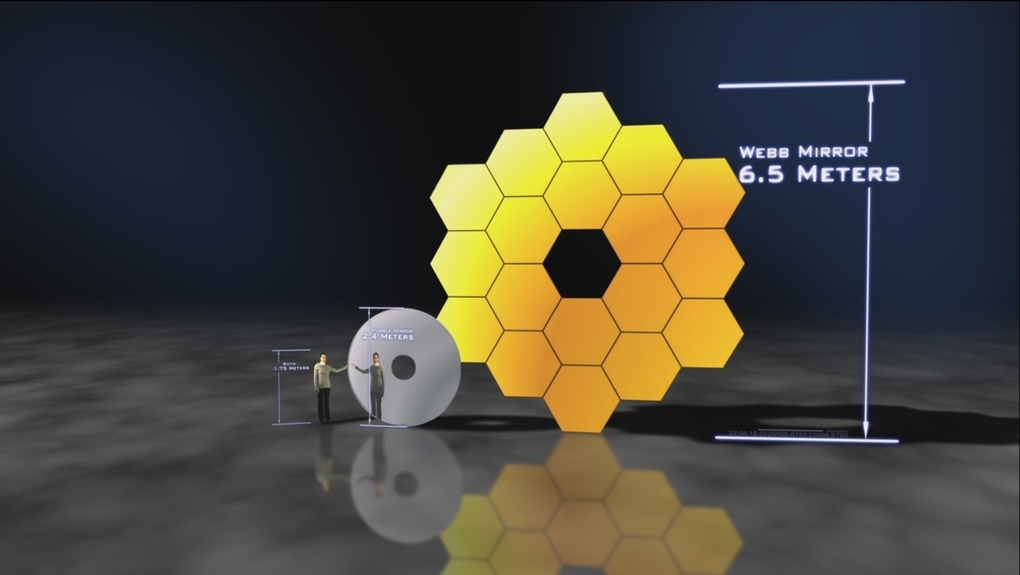
The primary mirror size of Hubble as compared with the James Webb Space Telescope
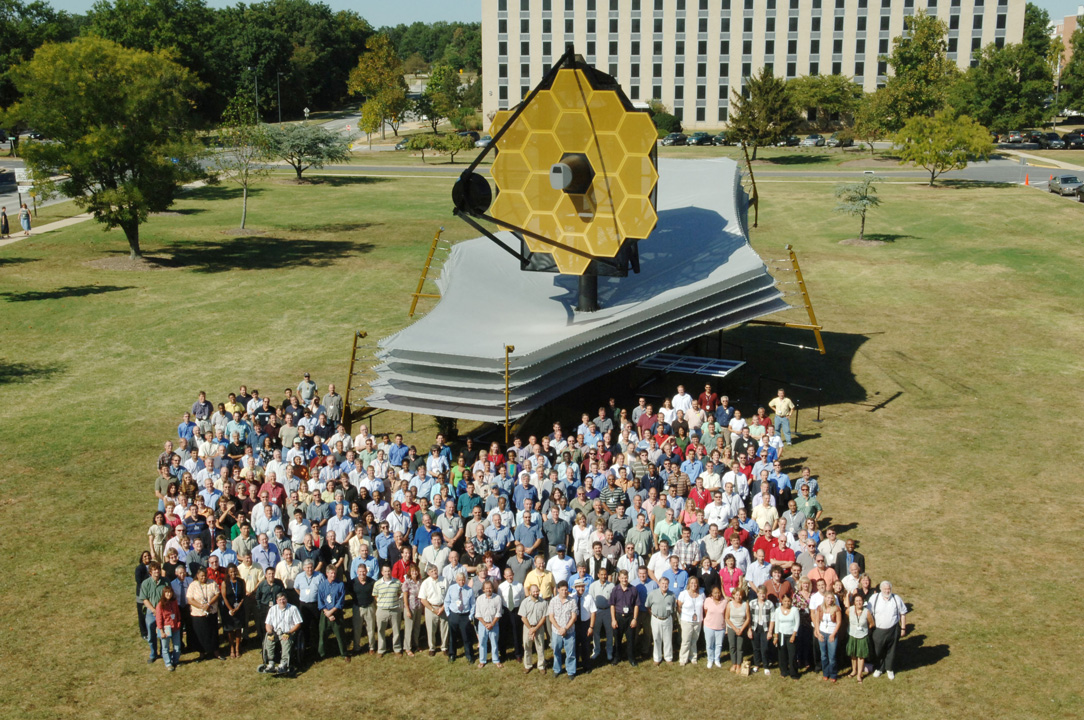
The James Webb Space Telescope will launch in 2018 aboard an unmanned Ariane 5 heavy lift rocket.
Also you may not be aware of it but NASA was given two Hubble type telescopes from the National Reconnaissance Office.
SEE: Spy Satellite Telescopes Donated to NASA 'Came Out of the Blue' - Space.com - July 14, 2012
One of those telescopes is being used for NASA's WFIRST/AFTA mission which will also do exoplanet science and there are calls to fly the starshade with it.
If the starshade doesn't fly with WFIRST/AFTA then NASA still has a spare Hubble-sized telescope which they could dedicate to it. Learning more about these planets is a high priority at NASA so it's hoped it will fly within the next 10 years if Congress co-operates and approves the budget for it.
Further: Betty Hills map of known "civilizations" would be hard to prove even with a dedicated study of the systems surrounding Zeta 1 & 2 Reticuli with a start shade apparatus. Understandably the search would begin with closer star systems to Earth. Just like Betty's map reflects an expanding exploration from their "Beginnings".
Actually a starshade mission would be able to confirm habitable planets around just aboutevery star on that map. Distance would not be a factor as even with a smaller space telescope they estimate they could image planets around stars out to 20 parsecs (64 light years):
Excerpt:
The principle limitation of this small telescope
option is the spectral resolution achievable on
Earth twins with a reasonable allocation of
mission times, as detailed in this section.
The IWA drives obscurational search
completeness. Figure 3.1-1 shows the
influence of IWA on the number of targets
available, with a representative photometric
sensitivity, lim∆mag, of 25 magnitudes.
limΔmag is the planet contrast at the threshold
of detectability. The blue points represent all
stars within 20 pc of the Sun having luminosity
< 3, while the contours represent constant
Earth twin search completeness at 25%. This is
the probability of detecting an Earth twin if
present in the habitable zone (here assumed to
be 0.7–1.4 AU scaled by the square root of
stellar luminosity). Stars below the curves have
at least 25% observational completeness.
So the question of whether or not habitable planets exist around Zeta 1 or Zeta 2 Reticuli could be answered with this mission as they only lay around 39 light years (12 parsecs) away.
Thanks for the study, great work…
Thank you for the time you took to read/watch it.
edit on 12-1-2015 by JadeStar because: (no reason given)
A thread cross between science and the "unknown" is why I come to ATS.
I have more questions, I'll be back…
I have more questions, I'll be back…
originally posted by: Maverick7
Great first post, but there's substantial evidence that shows this was a psyop by the nice people at Pease AFB.
That would not shock me at all. There was a lot of testing of psychedelics on people without their knowledge in those days.
I think Barney was given a psychoactive substance and that there were some hijinks by three-letter agencies and the gubmint to see how they'd react and to draw out 'true believers'.
Thus it's kind of a waste of time to get involved in analyzing that case, intriguing as it may be.
Well I don't think it is a waste of time.
Even if what you say is true, the way this evidence in association with a UFO abduction case was handled back then by people of science like Ms. Fish, Mr. Dickenson, Dr. Sagan, etc stands to show us all what -is- possible with regards to proper scientific investigation of the UFO phenomena and abductions in particular if another opportunity like this arises.
The problem is so few UFO cases have anything which can be examined in such a detailed, methodical way. Abductees are almost never given any information we don't already know. The star map was unique in that it promised information about our local neighborhood which was unknown to science in 1961 and in many ways still is if true.
And what if it's not true?
Well astronomer Percival Lowell over 100 years ago spent a lot of time looking for and recording observations of what he believed were canals on Mars.
This spawned an interest and fascination with the planet Mars that exists still today after a dozen or so robotic missions to the red planet.
The fact that such canals and Martians did not actually exist did not take away from Lowell's other work or our fascination with exploring that planet.
I suspect the same will be true of the nearby exoplanets. Some of them will be tantalizing Earthlike worlds which may have life and that will spark the imagination of many.
In many ways the whole Zeta Reticuli lore was ahead of its time because in 1961 it was still a major question whether ANY nearby stars had planets.
So yes, do not underestimate the impact of mythmaking in exploration. Our history is filled with examples where myth and sci-fi drove real world exploration.
Science imitating art.
edit on 12-1-2015 by JadeStar because: (no reason given)
a reply to: JadeStar
I meant to say if life would evolve on such large planets .. you would suggest that the gravity would be bigger . So life in comparison to ours would be smaller or maybe larger in height . But thinking about it now I think it all depends on what kind of life would evolve as intelligent and if it would move or walk it just could be every variable lifeform thinkable. .so the question I ask is more likely irrelevant. .
but does that also mean that life would behold a curtain height or does it say nothing at all?
I meant to say if life would evolve on such large planets .. you would suggest that the gravity would be bigger . So life in comparison to ours would be smaller or maybe larger in height . But thinking about it now I think it all depends on what kind of life would evolve as intelligent and if it would move or walk it just could be every variable lifeform thinkable. .so the question I ask is more likely irrelevant. .
originally posted by: 0bserver1
a reply to: JadeStar
but does that also mean that life would behold a curtain height or does it say nothing at all?
I meant to say if life would evolve on such large planets .. you would suggest that the gravity would be bigger . So life in comparison to ours would be smaller or maybe larger in height .
Probably smaller in height, more squat depending on the amount of gravity which of course would depend on the mass of the planet. Radius size doesn't necessarily = mass. That's one reason why if we know the size and the mass of the planet we can infer what it's made out of. ie: some planets we have sizes and masses for indicate they are made up almost entirely of water. Others are made up almost entirely of carbon. Our earth is made up mostly of silica, or sand.
Remember that next time you're at the beach
edit on 12-1-2015 by JadeStar because: (no reason given)
a reply to: JadeStar
Thanks so much for the responses here. If I may observe from an earthbound plane…
This star shade device will be independent, internally guided and have fuel to move around to interdict stars for the various telescopes. The optics on these devices will be able to resolve the goldilocks planets. Will they also be able to use spectrometers aboard the telescopes to measure gasses in the atmospheres, potentially identifying technological effluence from civilizations?
When is the star shade going from concept to launch, if you know?
And most importantly,
I been wondering about that "high priority" myself. As yet we have no capability to reach any stars we find that have "habitable planets" but I notice too the intense searching that is going on to find them. Hard for me to believe its just because they are there, sort of thing.
I suggest they start by looking at the stars in Betty's map instead of wasting what fuel star shade has available looking where NASA thinks life may be.
This search outside the solar system, is it a de facto resignation that the solar system is devoid of conditions for life, you think? Like we've looked here and now are beginning to widen the search?
Thanks again for taking the tome to tell everyone about this fascinating science. The Science of the search for life. Imagine them finding evidence of a planet like ours with smog from civilization. What then?
Thanks so much for the responses here. If I may observe from an earthbound plane…
This star shade device will be independent, internally guided and have fuel to move around to interdict stars for the various telescopes. The optics on these devices will be able to resolve the goldilocks planets. Will they also be able to use spectrometers aboard the telescopes to measure gasses in the atmospheres, potentially identifying technological effluence from civilizations?
When is the star shade going from concept to launch, if you know?
And most importantly,
Learning more about these planets is a high priority at NASA so it's hoped it will fly within the next 10 years if Congress co-operates and approves the budget for it.
I been wondering about that "high priority" myself. As yet we have no capability to reach any stars we find that have "habitable planets" but I notice too the intense searching that is going on to find them. Hard for me to believe its just because they are there, sort of thing.
I suggest they start by looking at the stars in Betty's map instead of wasting what fuel star shade has available looking where NASA thinks life may be.
This search outside the solar system, is it a de facto resignation that the solar system is devoid of conditions for life, you think? Like we've looked here and now are beginning to widen the search?
Thanks again for taking the tome to tell everyone about this fascinating science. The Science of the search for life. Imagine them finding evidence of a planet like ours with smog from civilization. What then?
Not around much anymore, Jade, but I wanted to both thank and congratulate you on this awesome series of threads. Are you in contact with any of the
folk associated with CAIPAN? Seems like you would be a good fit with some of what they are doing.
Thanks again for your research and methodologies and all the hard work it requires.
P.S. - I think the Hill's were exceptional people and they were high on my list for years as possibilities of the "real deal," but time and research do actually point a fairly solid finger at alphabet shenanigans rather than Zet-ies.
Thanks again for your research and methodologies and all the hard work it requires.
P.S. - I think the Hill's were exceptional people and they were high on my list for years as possibilities of the "real deal," but time and research do actually point a fairly solid finger at alphabet shenanigans rather than Zet-ies.
originally posted by: intrptr
a reply to: JadeStar
Thanks so much for the responses here. If I may observe from an earthbound plane…
This star shade device will be independent, internally guided and have fuel to move around to interdict stars for the various telescopes. The optics on these devices will be able to resolve the goldilocks planets. Will they also be able to use spectrometers aboard the telescopes to measure gasses in the atmospheres, potentially identifying technological effluence from civilizations?
Yes! That's why the starshade mission is so exciting. It really is the one that gets down to the nitty gritty and takes us beyond the "yes there is a planet there" to "yes there is a planet there, its made of this, it has this much water, it has life, and maybe intelligent life".
There have been proposals to look for artificially produced molecules like CFCs in the spectra from planets like this using the James Webb Space Telescope. It would be a piece of cake for a starshade mission.
SEE: Next-Generation Telescope Will Be Able to Detect Pollutants on Other Planets - PBS.org - July 25, 2014
Also it may be possible to detect the unique spectral signature of artificial light coming from the night side of a planet like Earth with such a mission.
SEE: The Light of Alien Cities - Ashley Corbion -November 4, 2011
Excerpt:
Abraham Loeb of Harvard-Smithsonian Center for Astrophysics, and Edwin Turner of Princeton University have now suggested a new way for detecting alien civilization, and it is pretty simple: we should look for their city lights. So if it is that simple, why aren’t we already doing it? The only limitation is technology: to glimpse the light of alien cities, researchers would have to be able to distinguish it from the glare of their parent star. According to the two scientists, the slight change in light from an exoplanet as it moves around its star should be detectable. Indeed, an inhabited exoplanet with city lighting would emit more light than one without artificial lighting during a dark phase (when orbiting its star the planet would go through phases similar to those of our Moon).
With our current technology, the team estimates that we should be able to detect a Tokyo-sized metropolis on Pluto. Obviously, it’s very unlikely that there is any alien civilization out there or anywhere in the Kuiper Belt (the region in which Pluto is orbiting the Sun). However, by the time the first Earth-like exoplanets are found, our technology will have improved and should be able to detect the artificial lights of potential nearby Earth twins.
Although this technique also relies on the assumption that any alien civilization would use Earth-like technologies, it seems rather difficult to avoid artificial lighting, unlike radio signals. And that’s why I personally hope to see such research being done in the near future.
When is the star shade going from concept to launch, if you know?
The earliest it could fly would be 2022 as part of the W-FIRST/AFTA mission.
If it ends up being its own dedicated mission then it would fly sometime after that.
And most importantly,
Learning more about these planets is a high priority at NASA so it's hoped it will fly within the next 10 years if Congress co-operates and approves the budget for it.
I been wondering about that "high priority" myself. As yet we have no capability to reach any stars we find that have "habitable planets" but I notice too the intense searching that is going on to find them.
I can explain this.
Kepler.
It was a game changer.
Until Kepler we had to guess at how many Earths there might be in our galaxy (ne in the Drake Equation). Kepler provided us with hard numbers for the first time.
What Kepler found was that 1 in 5 (22%) stars like our Sun have an Earth sized planet orbiting in the goldilocks zone where liquid water could exist. It also found a whopping 1 out of 2 (%50) low mass, M-type red dwarf stars had an Earth sized planet orbiting in the Goldilocks zone.
As you can imagine this lead to great excitement at the 2nd Kepler Science Conference and so there has been a steady drumbeat by NASA towards direct imaging missions, first with the James Webb Space Telescope (which may be able to directly image SuperEarth sized planets around nearby low mass stars) and then with a dedicated starshade mission which could see planets like the Earth around nearby Sunlike stars (Tau Ceti, Sigma Draconis, 82 Eridani, 61 Virginis, eta Cassiopeia, Pollux, etc).
Every new discovery by Kepler has been tantalizing. The first was Kepler-186f which became the first "Earth Cousin" because it orbits a low mass star it can't be considered an Earth Twin but its exciting because it could very well be a lush habitable world.

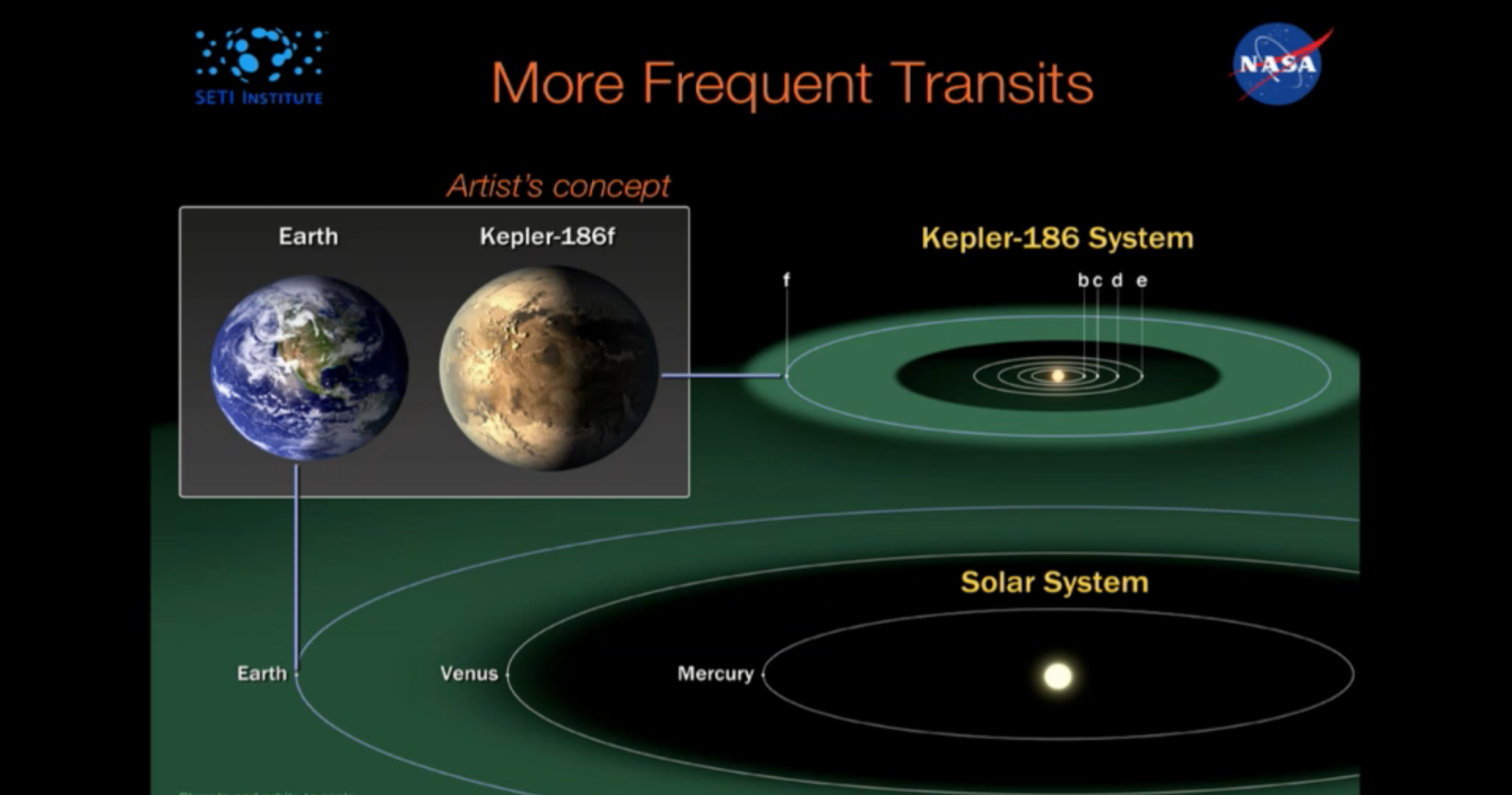
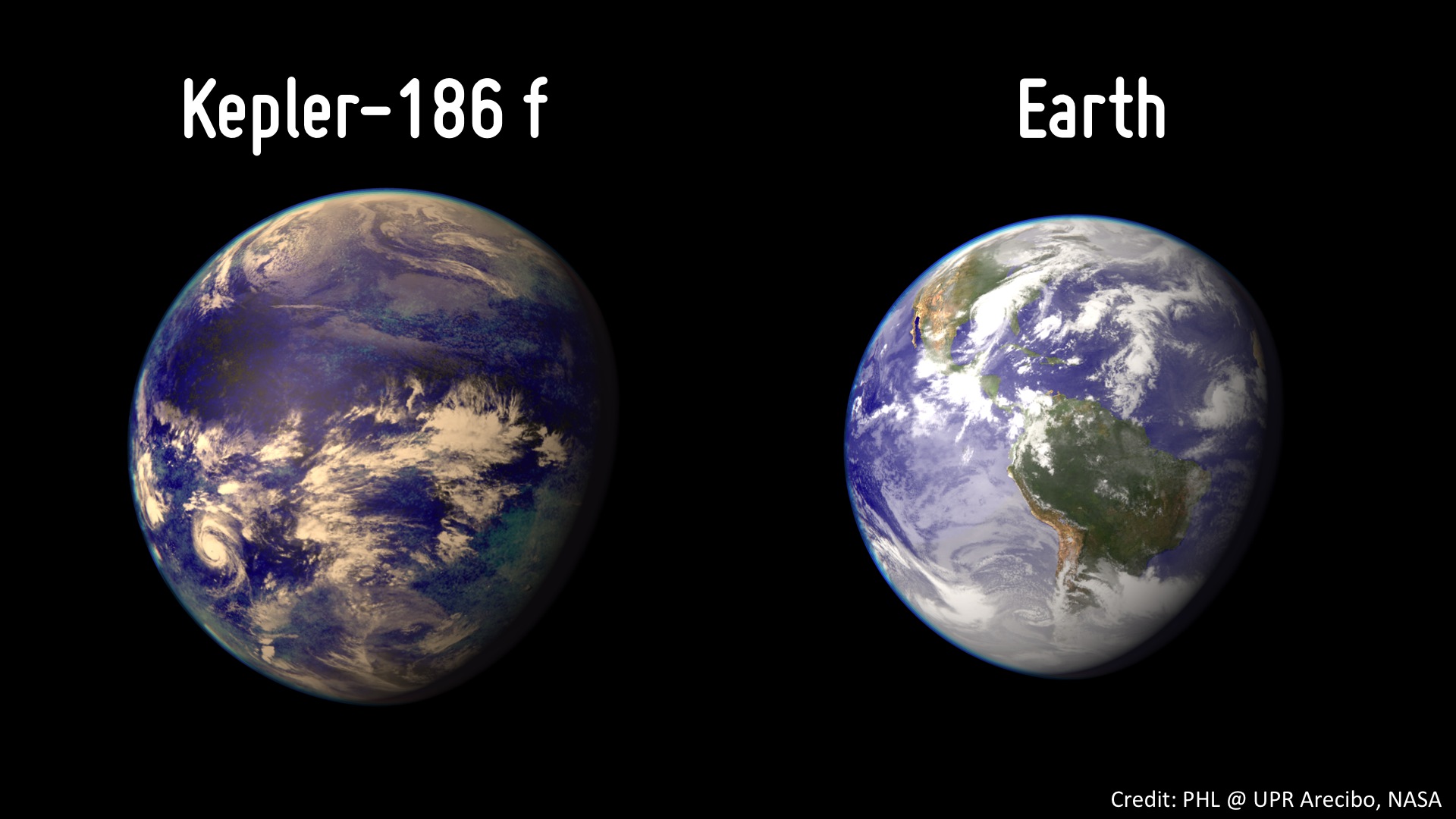
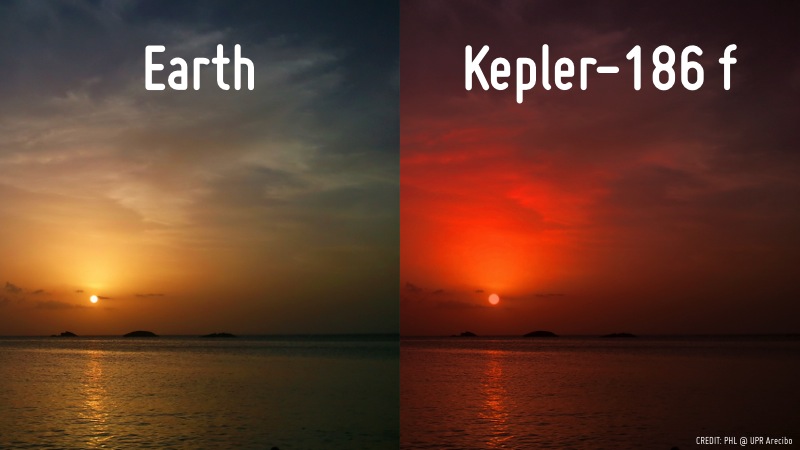
NASA even created this retro travel poster for it this past week:

This was one reason for this NASA press conference last year on the search for life in the universe:
Hard for me to believe its just because they are there, sort of thing.
Well that's pretty much it. It's also because the House of Representatives have held two hearings on the search for life in the universe since this all broke with the 2nd Kepler Conference:
December 4, 2013
May 21, 2014
As you can see its the subject of yearly Congressional Hearings. There will likely be another one this year and next.
[yvid]
I suggest they start by looking at the stars in Betty's map instead of wasting what fuel star shade has available looking where NASA thinks life may be.
The good news on that front is that on an expanded list just about every star on Betty Hill's map will be examined because the same selection criteria Marjorie Fish used the NASA scientists are using.
But there are also known planets nearby like which we know exist but would like to analyze their atmospheres which is what that 2nd list was.
This search outside the solar system, is it a de facto resignation that the solar system is devoid of conditions for life, you think?
Not at all. Mars still holds the promise of microbial life. Jupiter's moon Europa has an ocean twice the volume of the Earth underneath its icy crust, we don't know what if anything might be swimming in it. Titan looks interesting with its liquid methane lakes, Enceladus, another moon of Saturn has been photographed by erupting liquid water into space.
(continued...)
edit on 12-1-2015 by JadeStar because: (no reason given)
new topics
-
President-Elect TRUMP Picks Former Florida A.G. PAM BONDI to be U.S. Attorney General.
2024 Elections: 54 minutes ago -
A Mysterious Orb filmed over NYC by local news
Aliens and UFOs: 2 hours ago -
Putin will warn civilians in targeted areas
World War Three: 3 hours ago -
The Popular Vote does not matter
Political Issues: 4 hours ago -
Gaetz withdraws from attorney general consideration
US Political Madness: 7 hours ago -
Bridgewater Triangle
General Chit Chat: 7 hours ago -
Is Russia Using a New Type of Beam Weapon Against Ukraine?
Weaponry: 9 hours ago -
Here is why Western leaders in NATO have zero fear of nuclear warfare. At all. Zero.
World War Three: 10 hours ago -
International Criminal Court Issues Arrest Warrant For Netanyahu
Mainstream News: 11 hours ago
top topics
-
Well we know Putins ICBMs won't fail in their silos
World War Three: 12 hours ago, 13 flags -
International Criminal Court Issues Arrest Warrant For Netanyahu
Mainstream News: 11 hours ago, 13 flags -
Gaetz withdraws from attorney general consideration
US Political Madness: 7 hours ago, 12 flags -
racist rant, but she made the arguement to get rid of DEI
US Political Madness: 12 hours ago, 10 flags -
Putin will warn civilians in targeted areas
World War Three: 3 hours ago, 10 flags -
Is Russia Using a New Type of Beam Weapon Against Ukraine?
Weaponry: 9 hours ago, 10 flags -
Bridgewater Triangle
General Chit Chat: 7 hours ago, 7 flags -
The Popular Vote does not matter
Political Issues: 4 hours ago, 6 flags -
Here is why Western leaders in NATO have zero fear of nuclear warfare. At all. Zero.
World War Three: 10 hours ago, 5 flags -
A Mysterious Orb filmed over NYC by local news
Aliens and UFOs: 2 hours ago, 4 flags
active topics
-
Putin will warn civilians in targeted areas
World War Three • 23 • : MauiWaui -
Yet another Hack...
Rant • 12 • : Irishhaf -
President-elect TRUMP Picks MATT GAETZ for his ATTORNEY GENERAL - High Level PANIC Ensues.
2024 Elections • 120 • : WeMustCare -
President-Elect TRUMP Picks Former Florida A.G. PAM BONDI to be U.S. Attorney General.
2024 Elections • 3 • : lilzazz -
Is Russia Using a New Type of Beam Weapon Against Ukraine?
Weaponry • 15 • : Scratchpost -
-@TH3WH17ERABB17- -Q- ---TIME TO SHOW THE WORLD--- -Part- --44--
Dissecting Disinformation • 3341 • : dashen -
Here is why Western leaders in NATO have zero fear of nuclear warfare. At all. Zero.
World War Three • 6 • : CosmicFocus -
Well, here we go red lines crossed Biden gives the go ahead to use long range missiles
World War Three • 318 • : Tolkien -
Help in song interpretation
Music • 12 • : KrustyKrab -
Democrat county officials openly declare intention to commit ballot fraud in PA
2024 Elections • 22 • : WeMustCare

